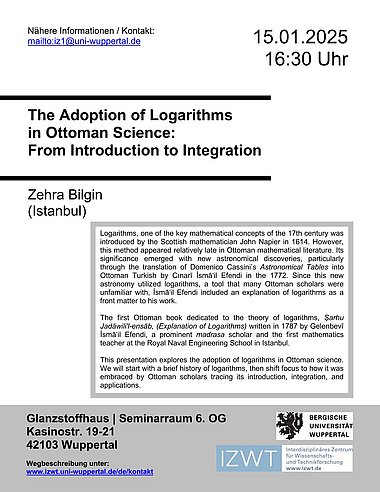IZWT-Kolloquium - The Adoption of Logarithms in Ottoman Science: From Introduction to Integration

Logarithms, one of the key mathematical concepts of the 17th century was introduced by the Scottish mathematician John Napier in 1614. However, this method appeared relatively late in Ottoman mathematical literature. Its significance emerged with new astronomical discoveries, particularly through the translation of Domenico Cassini’s Astronomical Tables into Ottoman Turkish by Cınarī İsmāʻil Efendi in the 1772. Since this new astronomy utilized logarithms, a tool that many Ottoman scholars were unfamiliar with, İsmāʻil Efendi included an explanation of logarithms as a front matter to his work.
The first Ottoman book dedicated to the theory of logarithms, Ṣarhu Jadāwili'l-ensāb, (Explanation of Logarithms) written in 1787 by Gelenbevī İsmāʻil Efendi, a prominent madrasa scholar and the first mathematics teacher at the Royal Naval Engineering School in Istanbul.
This presentation explores the adoption of logarithms in Ottoman science. We will start with a brief history of logarithms, then shift focus to how it was embraced by Ottoman scholars tracing its introduction, integration, and applications.
Termin ICS-Download